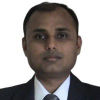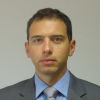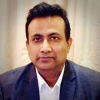
KNOWLEDGESTREAM AT-A-GLANCE
Next Generation Technology Solutions for Healthcare
ABSTRACT
We're focusing on technology and corporate solutions through the lens of healthcare. How should healthcare companies utilize and/or invest in technologies and services like artificial intelligence, blockchain, IoT and devices, cyber security, data and cloud solutions, and machine learning. One example is how to develop better patient privacy solutions through the use of blockchain technology.
PARTICIPANTS















OBJECTIVES
1. Market Segmentation: Define market segments & ecosystems in the healthcare space that are most ripe for innovative technologies and disruptio.
The panel viewed technology impacts from the perspective of different segments of the healthcare ecosystem, including the patients, service provider, insurer and financial institution.
2. Exploring New Applications and Use Cases in Heathcare: Current and new use cases demonstrating the value that the technologies can deliver.
The panel explored numerous use cases and examples that were cited throughout, focusing on digital ledger, artificial intelligence, machine learning, data science, Internet of Things and cybersecurity technologies.
3. Build New Business and Operational Models: Define new business and operational models that represent opportunities for enhanced value creation.
Numerous business operational model concepts were posed, focusing on personalized holistic approaches to patient services. They featured blending data, information and processes among insurers, service providers and financial institutions.
4. Develop a Viable Roadmap for Deployment and Adoption: Define the recommended path(s) for deployment and adoption within the ecosystem, along with associated challenges and barriers, and how they could be overcome.
Issues and challenges regarding adoption for each technology were explored. These involved collaboration, data and information sharing and encouraging standardized practices to the effect.
End Date: Apr 16, 2019
CONTRIBUTIONS
ACTIVITY
158 Days
7 Themes
29 Contributors
1141 Posts
1204 Comments
256 Followers
OUTPUTS
6 Slide Deck
6 Blog Post
7 Video
CALLS ATTENDED
• 2018-11-12 17:04:33 - A recording of the Scoping Call & Talent Review was uploaded
• 2018-12-20 16:27:15 - A recording of the Scoping Call & Talent Review was uploaded
• 2019-01-03 22:25:53 - A recording of the Prelaunch Call was uploaded
• 2019-01-24 18:30:00 - Check-in call
• 2019-02-07 08:55:03 - Check-in call
• 2019-03-06 10:00:17 - Check-in Call
• 2019-03-22 10:11:53 - Check-in call
EXECUTIVE SUMMARY
Healthcare is fertile field for assimilating new technologies, which can not only help to improve patient care and outcomes, but also reduce waste, increase resource utilization and ultimately reduce costs for all involved stakeholders. Some of these opportunities include:
- Overall, leading technology can be an enabler to optimize both patient care and the associated revenue cycle management, offering a holistic approach to closely integrating both of these functions.
- The use of digital ledger technology, which has the potential to improve the quality and integrity of patient related data, and consequently, improve the medical and business processes that use such data.
- Since healthcare is an industry that is highly vulnerable to costly breeches and data theft, there are significant opportunities to utilize both organizational and technological based mechanisms to counter these risks.
- The pattern recognition capabilities of Artificial Intelligence and Machine Learning can remove guesswork and automate decision making across numerous applications and levels in healthcare, including medical decisions, making, insurance and health payment processing, predicting medical costs and improving information exchange and delivery.
- Coupled with methods associated with data science, the above can be used to identify patterns at the individual patient level, opening the door to enabling more personalized medical and financial services.
- Internet of Things can enhance care for restricted patients through Telemedicine, and eliminate the pitfalls of manual data entry at the point of care, and reduce payment cycle times.
Realization of the above opportunities requires attention to the privacy and security of patient data and the protection of the involved systems and devices.
RECOMMENDED NEXT STEPS
- Examine strategies that focus on data sharing across the disparate players within the healthcare ecosystem. with the intention of establishing new business, operational and collaborative models. Seek to standardize such models to the extent possible.
- Explore technologies that can help deliver holistic and personalize patient offerings and integrate both the medical and financial aspects of service delivery.
- Take a vigilant stance in protecting patient related data and the systems that are responsible for managing such information. This includes both technological and managerial approaches.
- Foster approaches that involve advanced data technologies that can be used to optimize resources, automate decision making, reduce errors and improve payment cycles.
- Establish partnerships between medical service providers, insurers and financial institutions to create new offerings that can make healthcare services more cost-effective and affordable to patients.
THEME #1
Blockchain Technologies
THEME SUMMARY
Shaping Next Generation Healthcare with Distributed Ledger Solutions: Blockchain's Role in Supporting the Future of Healthcare
- Blockchain (BC) enables seamless real-time sharing of patient related data across distinct healthcare organizations in a secure and trusted fashion, enabling faster processing of claims and payments.
- Distributed Ledgers (DL) used with BC facilitates easier management pf patient related data by both providers and patients, providing a transparent, consistent and auditable view, and can deter fraud.
- BC can improve the effectiveness of Artificial Intelligence (AI) since enhanced transaction provenance can lead to better data, models, conclusions, medical decisions and ultimately patient outcomes.
- BC offers new healthcare business & operational models by increasing the value of patient-related data. New opportunities are envisioned in clinical trials, medical devices, drugs, research & others.
Sharing Data Safely Across Different Entities
seamlessly integrate or replace the separate, badly-connected, hard-to-integrate software solutions and databases that organizations use across their business
blockchain can make health records immutable, which would allow hospitals and insurance companies to use health records with more confidence for faster patient and insurance claim processing
It could assure privacy & security by leveraging encryption and access control so that the parties (trusted participants) could get confirmation of the receipt of the product without having access to protected patient information (PHI) and, in turn, provides the ability to validate patient identity.
Enriching Medical Payment Processing
enable consumers and trusted entities to easily oversee and manage all their information in a uniform, consistent way across all their various channels
Use of BC in payment tracking and compliance could provide a more secure and auditable approach. The entire lifecycle of the transaction is available. In the case of Medicare/aid, etc this provides a level of transparency not available today.
Blockchain permits the use of cryptocurrency as payment versus cash, which is in prevalence. There are cases of fraud in money and billing unperformed services. Billing automation will remove third parties and health/social security insurance payments using cryptocurrency could deter fraud.
Convergence with other Technologies
BC and AI are complementary technologies. BC is a record of transactions between entities. AI is a decision engine that uses data. An insurer's AI engine could look at data and recommend a care plan, estimate costs for underwriting purposes, and alert clinicians when things are about to change.
BC can increase AI effectiveness since secure data sharing means more data, then better models, better conclusions / actions, leading to better results / outcomes.
In healthcare, there is demand for precision medicine, improved utilization, and better health outcomes. Driving adoption should be in cross-industry partnerships and technology convergence, to address the challenges of cost, the needs of aging population, and the growing usage of smart devices.
Challenges
Right now, de-identification of data is a process that requires third parties. We can envision a blockchain-based system that could facilitate data exchange. New regulations (GDPR, Consumer Privacy Acts, etc.) will force companies to develop audit and consent trails for where the data goes.
One of the most formidable challenges for the healthcare industry is data quality. The level of effort associated with data cleansing to support establishing APCDs (all-payer claims databases).
Each player owns their suite of systems, data transfer between them uses old methods such as EDI. This approach will never deliver transparency because the integrity of each participant cannot be inspected. This separation of systems has merit in protecting information that should not be shared.
New Healthcare Business Models and Applications
Consumers sell their health data to pharmas for use in drug discovery. Healthcare providers might gain reciprocal benefits from such an exchange. Blockchain health data sharing creates a symbiotic relationship between pharmas & providers, changing the roles each plays in the drug discovery process.
Blockchain provides benefits in clinical trials. Evidences cannot be erased inadvertently or deliberately because blockchain protects them by keeping track of every step. It solves the challenges of accuracy, privacy and patient enrollment!
Another aspect of the potential for blockchain in HC is the traceability of both standalone and implanted medical devices. Tracking serialized units has been an issue for decades, and the ability to provide timely safety alerts or recalls would be improved dramatically with blockchain technology.
THEME #2
Cybersecurity in Healthcare
THEME SUMMARY
Cybersecurity in Healthcare
- HC space is most vulnerable: breeches, data theft lack of universal SW specifications, inadequate training, longer fraud detection time. Employees, contractors, third parties are known catalysts.
- At risk: EHRs, PHRs, EMRs, payment records, systems, applications, medical devices, financial & insurance claims information, credit card numbers, health portal usernames & passwords - high volumes
- Impacts: Patient scamming/scaring, identity and money theft, data selling (dark web), corruption of drug and medical plans, fraudulent billing & collection, blackmailing
- Solutions: Vigilant awareness training personnel, safeguards for transparency & audit trails, breach notification procedures, provider data ownership, encryption & SW updates, hardened SW development
HC space is most vulnerable: breeches, data theft lack of universal SW specifications, inadequate training, longer fraud detection time. Employees, contractors, third parties are known catalysts.
The biggest risk to HIPAA regulated data are still the employees and contractors working for the organizations. Several high profile (i.e. Medstar Health) data breeches have cost the organizations millions in hard costs, and in some cases, priceless brand equity loss in already competitive markets.
In 2017, the healthcare was one of the most vulnerable industries to cyberattacks and the most costly - with each breached record costing about US$408, so the numbers add up really fast.
Health care cyber security is in its early state and far behind compared to cyber-attack. Not only that, it is often longer to detect a medical identity fraud compared to other types of fraud. Furthermore, health care data is richer in value and also volume compared to other industries.
At risk: EHRs, PHRs, EMRs, payment records, systems, applications, medical devices, financial & insurance claims information, credit card numbers, health portal usernames & passwords - high volumes
Health data amassed from electronic health records (EHRs, EMRs & PHRs), medical imaging, genomic sequencing, payor records, pharmaceutical research, wearables, health & wellness apps, and medical devices, etc. in extraordinarily high volume from many sources.
Healthcare data repositories containing medical records are valuable to cybercriminals as medical records include Social Security and credit card numbers, patient demographics, addresses, insurance identification numbers, and other medical information, and can sell on the black market.
Healthcare facilities and insurers are goldmines of organizational and patient data including social security numbers, names, addresses, birthdates, and much more.
Impacts: Patient scamming/scaring, identity and money theft, data selling (dark web), corruption of drug and medical plans, fraudulent billing & collection, blackmailing
The cost of a data breach for healthcare organizations continues to rise, from $380 per record last year to $408 per record this year, as the healthcare industry also continues to incur the highest cost for data breaches compared to any other industry, according to a new study from IBM Security and the Ponemon Institute.
A database with records of 140 million patients including the date of death for some is making its rounds on the dark web. Data is being sold in batches of 100 or more and analysts estimate that the bad actors may realize as much as $280 million.
Patient information like names, dates of birth, medical data and health insurance information is used to mail fraudulent bills & collect payment (many of us have a hard time figuring out how much we owe to whom with all the parties that send bills for co-insurance, co-payments, deductible, etc.).
Solutions: Vigilant awareness training personnel, safeguards for transparency & audit trails, breach notification procedures, provider data ownership, encryption & SW updates, hardened SW development
In other words, healthcare organizations can address almost 60% of attacks by improving employee training on avoiding scams, data management and other infosec basics..
Healthcare organizations should maintain ownership of patient data, not CSPs (cloud service providers). Data should also be easy to access in a reliable and secure environment.
Vast majority of healthcare systems today include encryption but many entities for various reasons are terribly behind on updating their systems to the latest version. Can't stress enough that keeping up with software releases is the best way to safeguard patient information.
THEME #3
Artificial Intelligence and Machine Learning
THEME SUMMARY
Artificial Intelligence (AI) and Machine Learning (ML) in Healthcare
- Pattern Recognition: guesswork removal; improved decisions; payment authorization patterns; claim accuracy; billing accuracy; Identify service propensity; quantify financial opportunity;
- Optimize Resources: reduce wastes & costs: unnecessary treatments, optimize billing, scheduling & revenue cycle management; identify billing errors and anomalies.
- Adoption: Cost prediction models from claim data; optimize group underwriting; aid clinical decisions; aid ecosystem collaboration; automate clinical practices; focus on individual patient preferences
- Challenges: Permitted data access; data integrity; vetting AI/ML ability to make unbiased decisions; data sharing incentives across organizations; choosing the right pilots & appraising them.
Pattern Recognition
A big challenge is complexity of medical billing. It is estimated that 30% of patients experience undetected billing errors per year. AI can take volumes of data and build an expectation profile that can point out anomalies where human oversight is needed. Patients are more accurately billed.
Pattern analysis for payment authorization is definitely relevant. For instance, predicting not only fraudulent claims but also over-prescribing, or repetitive or even irrelevant procedures.
Use AI/ML to scour millions of patient records with the goal of identifying areas of the market that have a propensity for certain services.
Optimize Resources
Precision medicine will be the future of personalized medicine. It helps to reduce the amount of medication there by reducing cost (of medication), unnecessary medical waste but most importantly reduce undesirable side effects, increase desired outcomes in the shortest time possible.
Digital physician assistive technology can auto-capture relevant diagnosis & billing codes & data, resuling in more accurate claims and greater auto-adjudication and/or payments.
Quantify financial opportunity and identify methods for improvement: opportunities to capture revenue, methods yielding highest return, stratify to optimize revenue capture, prioritize opportunities by success probability, quantified financial impact by provider, group, site, member & condition.
Solutions & Challenges
ML cost prediction models developed from claim records & other clinical data. Health plans, self-funded employers and other risk-bearing organizations benefit from better predictive precision. Optimize underwriting for large group renewal. Effectively manage healthcare spend and allocate resources.
The overall adoption relies heavily on large bodies of data being available, in a structured way that is also ontologically sound. At the same time, organizations (e.g. hospitals and EHR vendors) should be open to sharing data that can enable such solutions.
Consolidate data into a data warehouse, establish processes for managing data integrity and access, pilot a campaign using an A/B testing methodology to compare the data driven campaign against the status quo, deploy similar campaigns across top service lines and sub specialties.
THEME #4
Technology's Role in Reducing Healthcare Spending Costs
THEME SUMMARY
Technology's Role in Reducing Healthcare Spending Costs
- Opportunities: fraud reduction, improve revenue cycles, offer new payment services, automate authorization & eligibility processes, eliminate paper, documentation accuracy, find profitable initiatives
- Favored Approaches: patient self query, personalized billing, management of shared KPIs, modeling treatments, predicting costs & outcomes, connecting EHRs with financial data, identify gaps & risks
- Challenges: reduce complexity, increase standardization, improve data quality, expand data accessibility, stakeholder ownership to drive collaboration for innovation
- Solutions: Choose technologies that can synchronize data across parties for the patient, partnerships with banks & credit card companies to offer new payment methods & lending support
Opportunities
Holistic approach to revenue cycle management processes: unite front- and back-end functions to complete healthcare payments. Ensure seamless journey thru revenue cycle for faster, accurate reimbursement. Shift back-end functions to front to view account status & anticipate payment challenges early
Duplicate medical records and errors result in stopping payments for services delivered to an "incorrect" patient, fraudulent payments for services that were not delivered, stopping payments for fake IDs, and follow up treatments delivered to the incorrect patient.
Who can realize the benefits: healthcare providers by receiving faster payment, healthcare insurers less processing of payments and reimbursements, patients by providing easier options to pay and automating help when in uninsured situations.
Approaches
Visualization: patients self-query with visualization tools; AI: personalized approach to patient's billing cycle to profile each's timing, content, channel, payment method; Blockchain: claims adjudication, smart contracts reduce friction in transaction processes to reduce spend.
Technology should include robust suite of population health functions, delivery of risk stratification and normalization, identification of gaps in care, the management of KPIs, predictive modeling & analytics, and integration of actionable data with care coordination, and patient engagement tools,
Connecting EHR-Clinical Data with FInancial Data systems for greater insights into treatments, costs, and outcomes. Advanced computer-assisted coding (CAC) and rules-based workflow capabilities, increases efficiency and financial improvements through exception-based processing.
Solutions and Challenges
Leveraging technology and involving the right experts to assure usability and efficiency. Healthcare must reduce complexity, increase standardization, improve data quality, expand data accessibility.
Partner with credit card companies to automatically charge health expenses to HSA accounts, partner with banks to automate loans when HSA funds run low, link HSA with services for patients becoming uninsured or have high deductibles, peer- peer payment technology to fund a person's HSA account.
EHRs don't have comprehensive information about costs for an episode of care. Prices being paid comes from claims data held by payers, Consequently, providers would be better able to participate in new payment models if they could access claims data from health plans, Medicare, and other payers.
THEME #5
Using Data Science and Analytics to Improve the Healthcare Financial Ecosystem
THEME SUMMARY
Using Data Science and Analytics to Improve the Healthcare (HC) Financial Ecosystem
- In HC, data can originate from many diverse internal & external sources, systems and devices, and in many diverse formats. Properly curating data is essential for subsequent storage, usage & analysis.
- Among the major challenges for organizations is to keep data updated with ever changing patients & practices, and integrating various data formats while maintaining sound data quality & integrity.
- Data analytics can find patterns by associating patient characteristics with cost & outcomes to identify the most cost-effective treatment for a patient.
- A recommended prerequisite is a cloud based approach that coordinates data access & sharing across patients, payers & providers while cleaning & transforming data for subsequent use.
In HC, data can originate from many diverse internal & external sources, systems and devices, and in many diverse formats. Properly curating data is essential for subsequent storage, usage & analysis.
Big data can come from internal (electronic health records, clinical decision support systems, CPOE, etc.) and external sources (government sources, laboratories, pharmacies, insurance companies & HMOs, etc.), in multiple formats at multiple locations in numerous legacy and other applications.
Despite corporations collecting massive amounts of data, it is rarely in a usable format. The reasons are many but mainly because of the many formats used to collect & store data to extract meaningful data is hard. So much of my time is wasted in getting data that I need and then cleaning it up.
The main source of data that is required is from the hospital regarding the patient's service history, insurance payout and patient responsibility.
Among the major challenges for organizations is to keep data updated with ever changing patients & practices, and integrating various data formats while maintaining sound data quality & integrity.
Data constantly changes due to new treatments, drugs and personalized care models, changes in demographics, changing profiles, changes in payer organizations through various mergers and acquisitions.
Identify duplicate records, predicting deal state, automatic data capture, detect anomalies, third-party data inclusion
Health care data comes from a many sources and different formats. Data collection & aggregation communities are fragmented. Providers, payers, public health specialists, employers, social network communities and patients all collect data. There is duplication of data with no single source of truth.
Data analytics can find patterns by associating patient characteristics with cost & outcomes to identify the most cost-effective treatment for a patient.
The potential to yield optimal outcomes exists across many scenarios, for example: analyzing patient characteristics and the cost and outcomes of care in order to present best-fit and cost-effective treatments, which will also impact provider behavior
A comprehensive plan for health data collection, optimization and analysis. Applying predictive analytics, modeling and gleaning pattern-based and intelligent insights. Reduced aggregate medical costs and expanding sources of revenues are likely two major benefits associated with data.
Predictive analytics to distinguish between patients that pay their bills versus those who need a payment plan. Analyze a patient’s bill, past-payment behavior, insurance information, demographics, & other payment-specific attributes. Several potential options: pay-in-full, installments, subsidized.
THEME #6
Using Internet of Things (IoT) to Enhance Financial and Payment Processes in Healthcare
THEME SUMMARY
The following are some key findings:
- Used with Telemedicine, IoT reduces wait time & travel expenses, increases service reach and opens doors to new types of services, especially to those that are physically or geographically restricted
- Data delivered directly from various devices, avoiding pitfalls of manual data entry, costly mistakes and reducing the time it takes for medical event notifications that can generate payments
- IoT provides opportunity for new business models through sharing device data across players within the patient's ecosystem, even transcending different health systems
- IoT generated device data raises many implementation challenges, including security and privacy protection, legal use of information, data & system interoperability standards, & assimilation
Used with Telemedicine, IoT reduces wait time & travel expenses, increases service reach and opens doors to new types of services, especially to those that are physically or geographically restricted
For instance, general physicians could provide followups of their patients any time any where without physically presence in the consultation room! It also avoids the need for long appointment schedule which waste the time and money!
With IMoT doctors can provide patients with remote equipment to measure biometrics, provide care & talk to them over the web (telemedicine). They can receive data to modify care plans without requiring a patient visit & have frequent communication for better understanding of their health status.
The joining of IoT with Telemedicine serves the needs of difficult to reach patients. Whether homebound or living in rural locations they deserve to access the same level of treatment as in cities/suburbs. There's a financial upside if patients don't regularly take advantage of healthcare services.
Data delivered directly from various devices, avoiding pitfalls of manual data entry, costly mistakes and reducing the time it takes for medical event notifications that can generate payments
A costly financial aspect of HC is the data entry that occurs. Small mistakes result in rejected claims, further corrective actions, and often loss of payment. With IoT many simple things could be automated into the patient records and more accurately billed.
With IMoT doctors can provide patients with remote equipment to measure biometrics, provide care & talk to them over the web (telemedicine). They can receive data to modify care plans without requiring a patient visit & have frequent communication for better understanding of their health status.
IoT provides opportunity for new business models through sharing device data across players within the patient's ecosystem, even transcending different health systems
IMoT at a basic level improves existing systems for providers. If a patient has doctors in multiple health systems, their disparate EHRs (and therefore doctors and care plans) can be updated accordingly. The IMoT combined with AI/ML and NLP can nurture the massive loads of HC data.
IMoT can be introduced and ramped up to optimize a hospital’s daily functions and cut unnecessary costs. Tracking medical assets within a facility is a good use case.
Preventative care is a perfect application of IoMT. Biometric sensors and other devices can collect real-time data from health plan members, help point to higher-risk metrics or lifestyle choices, and notify payers to get the correct members enrolled in prevention programs.
IoT generated device data raises many implementation challenges, including security and privacy protection, legal use of information, data & system interoperability standards, & assimilation
Challenges include the obvious things like data security, as well as (as previously noted) legacy infrastructure deficiencies that thwart connecting effectively and efficiently – especially regarding convenience and with acceptable data transfer speeds.
privacy is an issue whenever we are talking about sharing patient data. But, it becomes a bigger issue when the data is used to provide/deny care.
Implementation follows a generic approach but addressing regulatory compliance and incorporating device specificity/interoperability is critical to success.
THEME #7
Thanks so Much - Our Panel Has Concluded!





